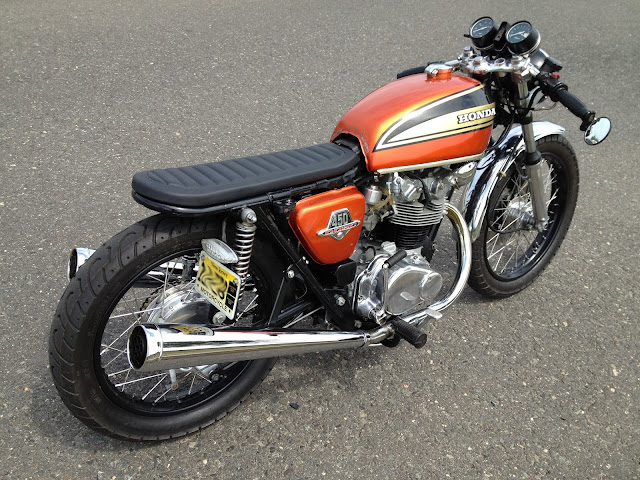Honda CB450
The unusual instrument console included both a speedometer and rev-counter. Honda’s parallel twin engine produced its maximum power at 8500rpm and was impressively reliable.
The CB450's rather heavy look was an accurate reflection of its performance, but there was little doubt that this bike represented the start of a new era for Honda.
Honda made a vivid impact in road-racing in the early 1960s, winning a string of world championships with powerful, high-revving, multi-cylinder machines. But the Japanese firm’s roadsters were limited to relatively modest small-capacity models of 305cc and less, which many people thought Honda would be content to build for years to come. Then came the CB450, Honda’s first big bike - and suddenly the motorcycle world seemed a very different place.
American magazine Cycle World, for one, understood the significance of the biggest, most powerful machine yet from Japan. ’Beyond any doubt, the big news item of the preceding 12 months came when Honda finally announced (‘admitted’ would be a better word) that there was, in fact, a new big-displacement addition to their line of motorcycles,’ the magazine commented when testing the CB450 in 1965.
The 445cc parallel twin’s look and layout were in most respects similar to those of the smaller twins with which Honda had been building a reputation for performance and reliability. The motor had oversquare dimensions of 70 x 57.8mm, a four-speed gearbox and a 180-degree crankshaft. It also incorporated several new features, notably twin overhead camshafts, operated by a long central chain. Valve springs were an unusual torsion-bar arrangement, instead of conventional coil springs.
Honda's attack on the world's motorcycle markets began with small-capacity twins, notably the sporty 125cc CB92 and its big brother, the 250cc CB72. The CB92 Benly Super Sport, to give the sohc twin its full name, appeared in export markets in 1961. It produced 15bhp at a heady 10,500rpm, and was good for an impressive 70mph (113km/h). Although the pressed-steel frame gave only average handling, the CB92 was stylish, well braked and neatly engineered. Boosted by Honda's grand prix triumphs, and joined in showrooms by the faster CB72 a year later, it did much to establish Honda as a manufacturer of high- performance bikes.
HONDA CB450
Honda’s 445cc engine combined a British- style air-cooled parallel twin cylinder layout with twin overhead camshafts.
Handling was quite responsive but the CB450 was not nearly as fast or as exciting as its specification suggested.
Specification Honda CB450 (1965)
- Engine Air-cooled dohc four-valve parallel twin
- Capacity 445cc (70 x 57.8mm)
- Maximum power 43bhp @ 8500rpm
- Transmission Four-speed, chain final drive
- Frame Steel twin cradle
- Suspension Telescopic front; twin shocks rear
- Brakes Drum front and rear
- Weight 4111b (186kg)
- Top speed 102mph (164km/h)

















0 comments: